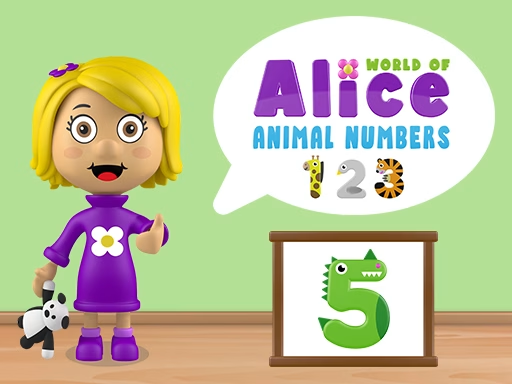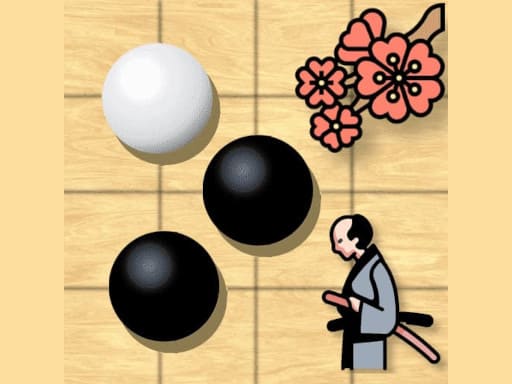
World of Alice – Animal Numbers: Where Learning Meets Play
A Magical Introduction to World of Alice
Imagine a classroom where numbers don’t just sit on a chalkboard—they run, fly, and swim right out of the pages in the shape of animals! That’s exactly what World of Alice – Animal Numbers brings to young learners. Developed by Nau.Kids, this educational game transforms the way children engage with mathematics by blending creativity, visuals, and interactive play.
In this game, Alice guides children through enchanting levels where every number is cleverly disguised as an animal. A “3” might look like a swan, a “2” might resemble a playful snake, and the fun never ends. It’s learning with a twist of magic, and trust me—it works wonders.
Why Learning Through Play Works
Before diving into gameplay mechanics, let’s talk about why playful learning is so powerful. Children absorb knowledge faster when lessons feel like an adventure. Numbers can be intimidating in isolation, but when a “7” transforms into a giraffe, suddenly math is no longer abstract—it’s relatable.
Psychologists and educators often emphasize “multisensory learning.” That means children remember concepts better when multiple senses are engaged. With vivid visuals, sound cues, and interactive clicking, World of Alice taps into this beautifully.
So if you’re wondering whether a game can truly help a child learn math, the answer is a resounding yes. Fun sticks. Stress doesn’t.
How the Game Works
At its core, World of Alice – Animal Numbers is simple enough for a child to navigate independently. Here’s the basic flow:
- Alice presents an animal shape.
- The child observes carefully—what number could it be hiding?
- Several number options appear.
- The child clicks the number that matches the hidden shape.
Correct answers are celebrated with cheerful sounds and animations, reinforcing confidence. Mistakes? Don’t worry—gentle nudges help kids try again. No frustration, just encouragement.
A Day in the Game: An Imaginary Playthrough
Let’s walk through what it’s like for a child playing this game.
Alice appears on the screen, waving hello. “Can you find the number hidden in this animal?” she asks. A lion appears, its mane forming the curves of an “8.” The child hesitates, then clicks “8.”
“Great job!” Alice cheers. Confetti sprinkles across the screen. The child beams with pride.
On the next round, a dolphin leaps across the screen, its tail curling into the shape of a “6.” Another correct guess, another moment of joy. The cycle continues: discover, guess, learn, celebrate. And just like that, math anxiety is replaced with curiosity.
Educational Value Beyond Numbers
Yes, the game teaches numbers—but it also builds a lot more:
- Observation skills: Kids learn to notice details and patterns.
- Critical thinking: Is this curve part of a “5” or a “6”?
- Confidence building: Every correct click boosts self-esteem.
- Fine motor skills: Clicking accurately helps hand-eye coordination.
It’s math, art, and early logic training all in one magical package.
Why Parents Love It
Parents appreciate tools that combine entertainment with learning. Unlike passive screen time, World of Alice is active and purposeful. It provides peace of mind: the child isn’t just “playing games” but actually practicing essential math foundations.
And because the game’s structure is so simple, parents don’t need to constantly supervise. A child can explore, learn, and grow independently, while parents can peek in and celebrate progress together.
Tips for Getting the Most Out of the Game
Want to maximize learning benefits? Here are a few strategies:
- Play together at first. Share the excitement, then gradually let your child take charge.
- Use real-life examples. After spotting a “2” shaped like a snake, point out the number 2 on a cereal box.
- Celebrate small wins. Every right answer deserves a cheer—motivation fuels learning.
- Limit playtime wisely. Short, consistent sessions are better than long marathons.
A Touch of Humor
Let’s be honest: some animals make better numbers than others. A snake turning into a “2”? Genius. A giraffe shaped like a “7”? Adorable. But try imagining an octopus shaped like a “1”—not so convincing, right? Luckily, World of Alice keeps the animal-number pairings clever and charming.
So, parents, don’t be surprised if your child starts saying things like, “Look, Mommy! That bird looks like a 3!” That’s not weird—it’s learning at work.
Game Design That Kids Adore
The vibrant colors, friendly music, and gentle voiceovers make every interaction a joy. Unlike some educational tools that feel sterile, World of Alice is alive with warmth and charm. The interface is intuitive, meaning even preschoolers can navigate with little guidance.
And of course, Alice herself plays a big role. As a cheerful guide, she makes children feel safe and supported. That “human” touch within the game helps maintain engagement.
Comparing with Other Educational Games
Many educational games exist, but few strike the balance between teaching and fun as seamlessly as this one. While traditional flashcards drill numbers, World of Alice creates emotional connections. It reminds us of classics like Sesame Street but in interactive form.
Parents often find that children are more willing to replay World of Alice than sit through another worksheet. And repeated exposure is the golden ticket to mastery.
The Role of Storytelling
Stories are powerful teachers, and Alice’s world is one long story waiting to unfold. Each number-animal pair feels like a mini-chapter. Children begin to see math as a narrative, not a chore.
And let’s face it—numbers alone rarely spark imagination. But when wrapped inside a zebra’s stripes or a butterfly’s wings, they suddenly become characters in a child’s adventure.
Practical Benefits for Early Education
Educators often recommend interactive games to prepare preschoolers for formal schooling. Here’s why:
- Children enter school familiar with numbers.
- They associate math with fun, not fear.
- They gain practice in digital literacy, an essential modern skill.
In short, World of Alice acts as a gentle bridge between playful exploration and structured education.
Final Thoughts: The Magic of Learning With Alice
At the end of the day, World of Alice – Animal Numbers isn’t just a game. It’s a gateway to learning that feels like play, designed with both children and parents in mind. With its mix of visuals, interaction, and encouragement, it transforms the way kids approach numbers.
So, are you ready to see numbers come alive in the most delightful way? Join Alice today and let your child discover the wonder of learning hidden inside every animal.
For Your Social
#WorldOfAlice #EducationalGames #AnimalNumbers #KidsLearning #MathIsFun #NauKids #ParentingTips #PlayAndLearn #PreschoolEducation #InteractiveLearning






